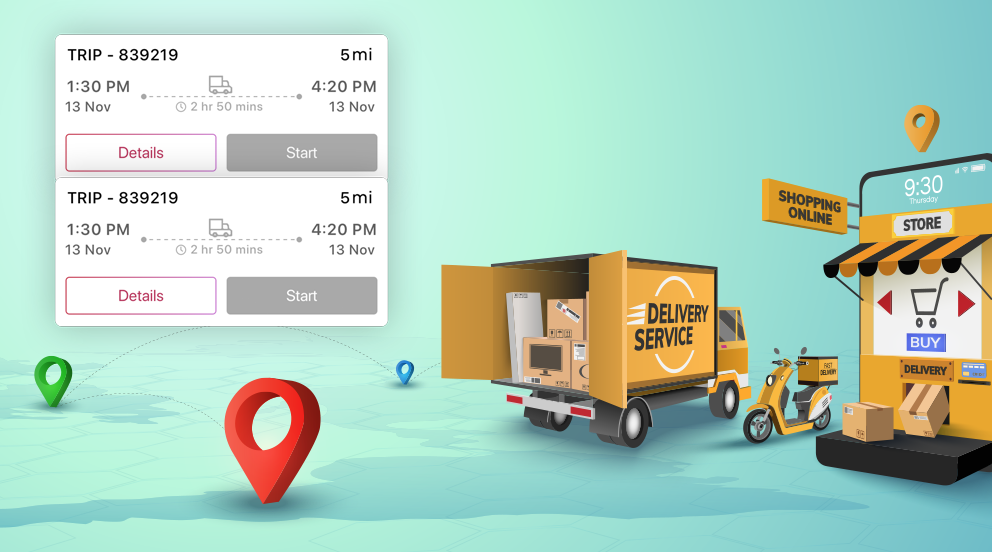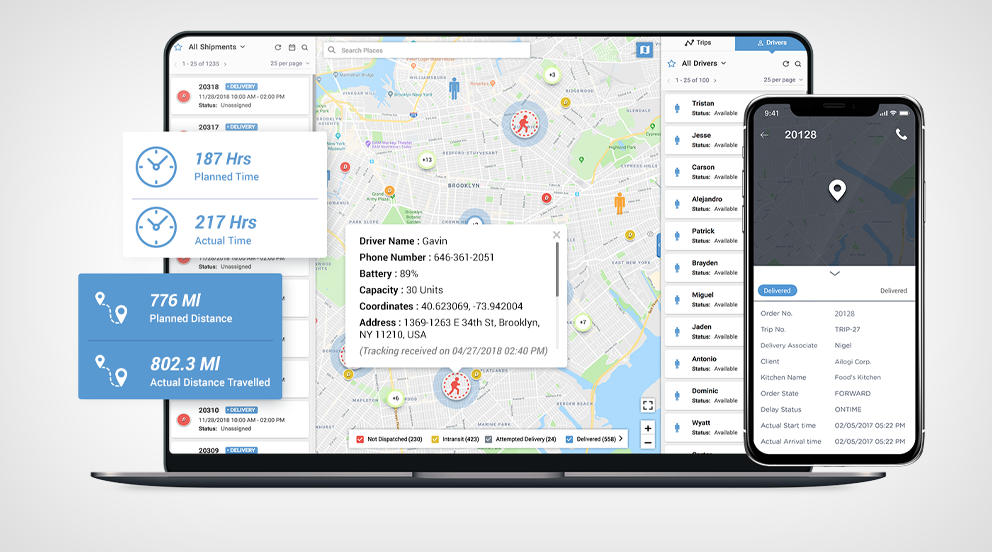Here’s a delivery tracking system that has the best enterprise route planning
Route Planning as a problem was formulated via the Travelling Salesman Problem back in 1930. TSP asks this question: “Given a list of cities and the distances between each pair of cities, what is the shortest possible route that visits each city exactly once and returns to the origin city?” And a vehicle routing problem is just a generalization of this almost century old problem which keeps mathematicians and computer scientists intrigued.
Route planning for a handful of drivers with a single digit number of stops can be done by solutions like Google Maps but the going gets complicated when you have more drivers or vehicles and stops above 50. Optimising route planning for stops above 10 also gets complicated just because of the number of variables involved. Delivery slot considerations, order batching, weather considerations, driver preferences and skills along with several other factors necessitate the need for advanced mathematical modeling.

At LogiNext, engineers dabble with integer programming, regression based algorithms and heuristics to build intelligent systems. Science4all has a good explanation for Integer Programming and there are several other resources to get into the technical details. At the core, our algorithm is learning from billions of data points that it has been fed over the past decade and constant modeling goes on to achieve the best results (route plans) in the quickest time.
Big Data Made Simple’s research shows that vendors compute optimal routes in one to five minutes, for planning around 50 routes with 1,000 stops and 2 hour windows. The LogiNext Mile platform is capable of going a step up by bringing down the computation time to a few seconds.
Here are some of the key features of the LogiNext Mile delivery tracking system:

Auto Allocation on the delivery tracking system: One of the biggest value propositions of a route planning system is to have a high percentage of auto allocation of orders depending on the set parameters. LogiNext Mile gives close to maximum possible auto allocation for a certain number of orders with the possibility of manual intervention. This makes the life of an operations manager easy with focus on optimization.
Module Configuration as part of the field service management: The LogiNext Mile platform has several configurations related to shipments, crate configurations, user access management and temperature control which make the route planning algorithm best suited to provide you with the best possible order schedule.
Surge Mapping for last mile delivery: Often, in a last mile delivery use case, there are areas and clusters where there is a sudden rise in number of orders. Even in a B2B first mile use case, an enterprise may need this for certain scenarios which require assigning orders in a particular cluster and here, Surge Mapping is a handy feature on the LogiNext Mile platform.
How trip resequencing helps in route planning to meet external realities?
Trip resequencing is a crucial strategy in route planning, as it allows businesses to adapt to external realities and optimize their logistics operations. In a world of constantly changing variables such as traffic conditions, unexpected disruptions, order cancellation, etc. Hence the need for order sequencing comes into play.
By resequencing trips, businesses can respond to external realities in real-time. For instance, if a delivery route is initially planned based on the fastest travel times, but a order cancellation occurs, the system can automatically resequence trips (based on the inputs set by the dispatcher) to minimize delays and ensure on-time deliveries. This not only prevents customer dissatisfaction but also saves on operational costs, such as fuel and driver payments.
Furthermore, trip resequencing can help businesses meet external realities by considering dynamic factors like delivery time windows and customer preferences. For instance, some customers may request specific delivery time slots or have preferences for certain delivery days. By resequencing trips to accommodate these requests, businesses can enhance customer satisfaction and loyalty.
Trip resequencing enhances operational efficiency, reduces costs, and ultimately leads to increased customer satisfaction. In a dynamic and ever-changing world, mastering the art of trip resequencing is a key to success in the logistics industry.
182








@LogiNext